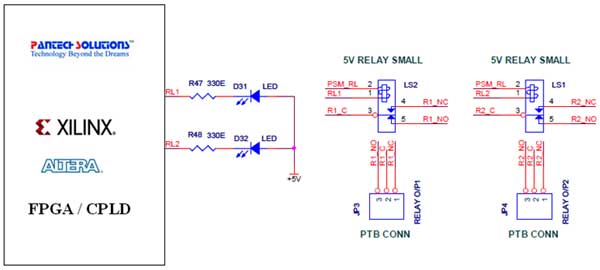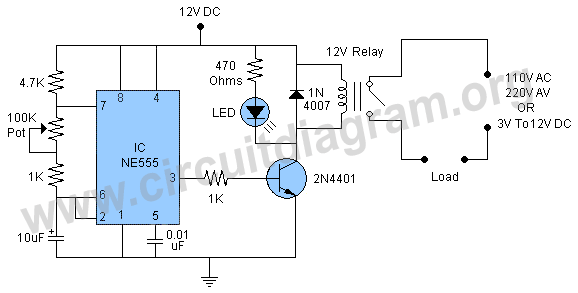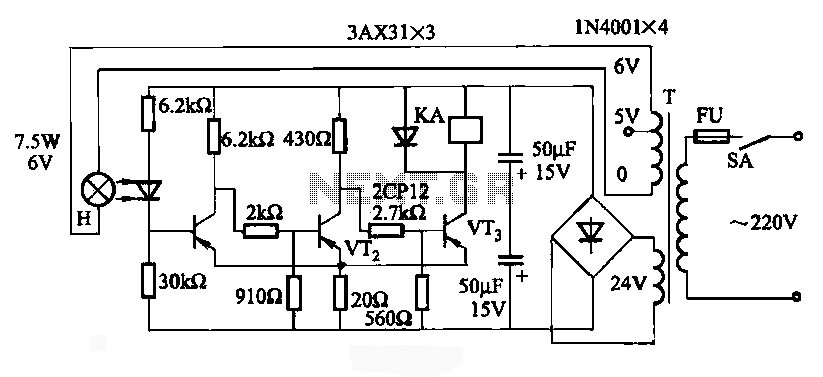
relay interfacing with fpga universal development board

The Universal Development Board features external 5V relay interfacing, as illustrated in the accompanying figure. The ULN2803 is utilized as a driver for FPGA I/O lines, with the driver outputs connected to the relay modules. A PTB connector is provided for an external power supply if required. Signal LEDs for each relay facilitate easy determination of the current relay state.
The Universal Development Board is designed to facilitate the interfacing of external 5V relays, enabling users to control high-power devices through low-power FPGA I/O lines. The core of the relay control mechanism is the ULN2803, a high-voltage, high-current Darlington transistor array. This component allows the FPGA to drive multiple relays simultaneously without exceeding the current limits of the FPGA's output pins.
In this setup, the ULN2803 connects directly to the FPGA's I/O lines, with each output pin of the ULN2803 linked to an individual relay module. The relays act as electromechanical switches, enabling the control of larger loads such as motors, lights, or other high-voltage devices. The inclusion of a PTB connector allows for an external power supply to be connected to the system, ensuring that the relays receive adequate power for operation, especially when controlling devices that require more current than the FPGA can provide.
Additionally, the board features signal LEDs for each relay, providing a visual indication of the relay's status. These LEDs illuminate when the corresponding relay is activated, allowing for quick verification of the system's operational state. This feature enhances troubleshooting and monitoring capabilities during development and testing phases.
Overall, the Universal Development Board is a versatile platform for developing and testing applications that require relay control, offering robust interfacing capabilities and user-friendly indicators for system status.The Universal Development Board has external 5v Relay interfacing, indicated as in Figure. ULN2803 is used as a driver for FPGA I/O lines, drivers output connected to relay modules. PTB connector provided for external power supply if needed. Signal LEDs for each relay help you to easy determine current relay state. 🔗 External reference
The Universal Development Board is designed to facilitate the interfacing of external 5V relays, enabling users to control high-power devices through low-power FPGA I/O lines. The core of the relay control mechanism is the ULN2803, a high-voltage, high-current Darlington transistor array. This component allows the FPGA to drive multiple relays simultaneously without exceeding the current limits of the FPGA's output pins.
In this setup, the ULN2803 connects directly to the FPGA's I/O lines, with each output pin of the ULN2803 linked to an individual relay module. The relays act as electromechanical switches, enabling the control of larger loads such as motors, lights, or other high-voltage devices. The inclusion of a PTB connector allows for an external power supply to be connected to the system, ensuring that the relays receive adequate power for operation, especially when controlling devices that require more current than the FPGA can provide.
Additionally, the board features signal LEDs for each relay, providing a visual indication of the relay's status. These LEDs illuminate when the corresponding relay is activated, allowing for quick verification of the system's operational state. This feature enhances troubleshooting and monitoring capabilities during development and testing phases.
Overall, the Universal Development Board is a versatile platform for developing and testing applications that require relay control, offering robust interfacing capabilities and user-friendly indicators for system status.The Universal Development Board has external 5v Relay interfacing, indicated as in Figure. ULN2803 is used as a driver for FPGA I/O lines, drivers output connected to relay modules. PTB connector provided for external power supply if needed. Signal LEDs for each relay help you to easy determine current relay state. 🔗 External reference





